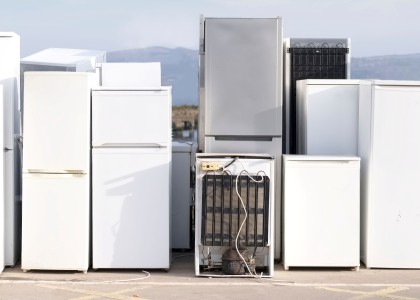Washington, DC—Biden administration standards for manufactured homes will boost the efficiency of more than half of new units, but in a major shortcoming, will require little improvement for smaller models, leaving future low-income residents with high energy bills.
Finalized today, the long-awaited standards from the Department of Energy (DOE) will require a majority of new manufactured homes (often known as mobile homes) to have significantly more insulation than they must today, as well as other energy-efficiency improvements. But all of the homes will still be allowed to be far less efficient than site-built homes in states with up-to-date codes. And the smaller “single-wide” models delivered on a truck in just one section—representing about 45% of today’s new manufactured homes—may still be made with only thin insulation or with single-pane windows. The efficiency requirements for those homes will be only slightly stronger than those in place since 1994.
“Residents of poorly insulated manufactured homes have paid high energy bills for far too long. This rule gives manufacturers the green light to keep building models with the same problems,” said Steven Nadel, executive director of the American Council for an Energy-Efficient Economy (ACEEE). “It’s going to leave many of the lowest-income households paying painfully high utility bills for even more years to come. Going forward the administration certainly shouldn’t make a habit of letting manufacturers make more-wasteful homes and products for lower-income people.”
Manufactured homes are a critical type of affordable housing; a majority of households who live in them have incomes under two times the federal poverty level. But the homes often waste large amounts of energy because of limited insulation and outdated windows and heating equipment. Energy costs are about 70% more per square foot in these homes compared to site-built homes, and a quarter of their residents spend more than 10% of their income on energy costs, ACEEE has found.
The new standards—based off a proposal from DOE last year—will save consumers $5.06 billion in costs (present value at 3% discount rate, net after added investments) and reduce carbon dioxide emissions by 80.4 million metric tons over 30 years, according to DOE.
DOE’s own analysis found that a stronger standard—requiring similar improvements for all models—would have reduced residents’ overall costs over time, as the upfront costs would be exceeded by the reduced energy bills. An ACEEE study published in February found that the lowest-income residents—who are rarely the first purchasers of the homes—would particularly benefit from a stronger standard ensuring all new units are significantly more efficient.
Background:
Approximately 6.8 million manufactured homes are used as residences in the United States; in 2021, 105,772 new manufactured homes were shipped, about 7% of all new homes.
State or municipal building energy codes cover most new home construction, but the federal government regulates manufactured homes, which are made in facilities that may ship to multiple states. The Department of Housing and Urban Development sets a building code for the homes, but it has not updated the energy provisions since 1994.
Recognizing the need to reduce energy waste in these homes, Congress—in a bipartisan energy bill in 2007—directed DOE to develop and finalize a separate energy standard for manufactured homes by 2011 based on the most recent model energy code for site-built homes (now the 2021 International Energy Conservation Code). The Sierra Club sued DOE over its failure to publish a rule by the 2011 legal deadline; the department agreed in a settlement to sign a final rule by May 16, 2022.


